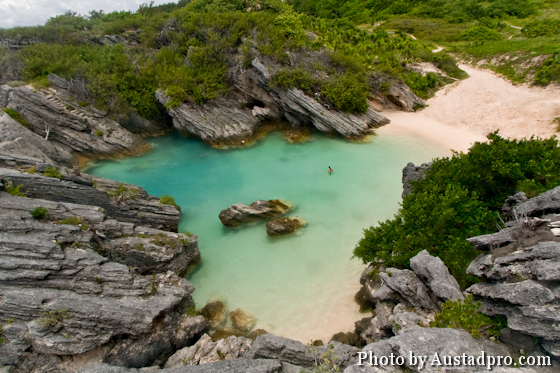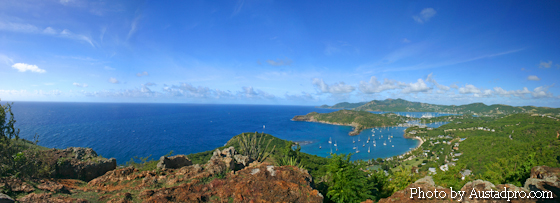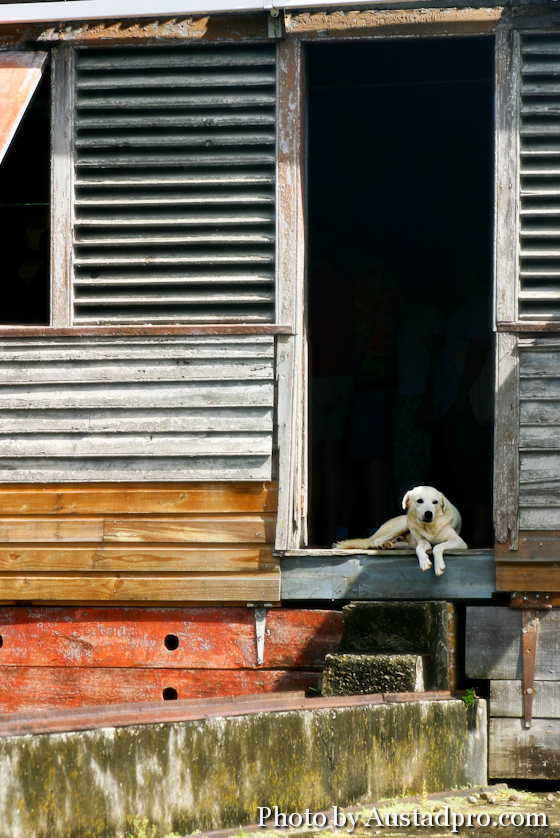Composition – Framing
Using a foreground element to create a frame within the photo’s frame is an effective compositional tool. The framing element not only isolates and emphasizes a subject, but also gives the picture a feeling of depth.
It can serve to obscure distraction or to create an interesting foreground where none exist. When done correctly the frame will seem so natural that the viewer is not always conscious of its presence. Framing works best when it is somehow related to the subject. Both natural and man-made objects serve well as frames for your images.
Natural Frames

The image of the scenic ocean off of Antigua (above) uses the forground to frame the vista. If this shot was taken closer to the edge of the cliff it would have left me with too much negative space or maybe some distracting elements that are down at the shore line. By stepping back, I used the natural frame of the cliff edge to add depth and perspective to the photo.
Tree branches are often used as natural frames when shooting landscapes. Instead of settling for a huge expanse of sky, fill the area with a compelling graphic design that a tree limb can offer.
Notice in the image below the rocks that envelop Jobson’s Cove direct your attention to the shallow emerald ocean pool in paradise. Using the rocks to frame your subject creates a very natural frame that will go unnoticed by most viewers.

 Man-made Frames
Man-made Frames
Choosing a frame related to the image adds more to the story told by your image.
Without the net framing these norwegian school children playing soccer (right), the viewer wouldn’t immediately know what the subject of the photo is. The net also allowed me to emphasize the subject while still being able to capture the full scene.
Man-made objects such as doors, windows, and arches are not only great for frames out buildings, but providing framing for your photos as well.
While visiting a run down spice factory in Grenada, I noticed a stray dog relaxing in an open doorway (below). Using the doorway as a frame allowed me to capture the rustic building full of texture and give this lonely dog more of a story.
Good images always tell good stories. Last year I was wondering through an old fort in Bermuda when I came across a small dark room with a hole in the wall looking out. Through the window I was able to capture a shot of the cruise ship I arrived on (below) and saw a wonderful opportunity to view the world as a soldier might have seen it hundreds of years ago protecting the waters of their shore.
By adding frames to your images, you can tell a story, hide distractions, add depth, fill wasted space, or simply add artistic embellishment and when used correctly most viewer won’t notice it, but they will notice how nice your photo is.



